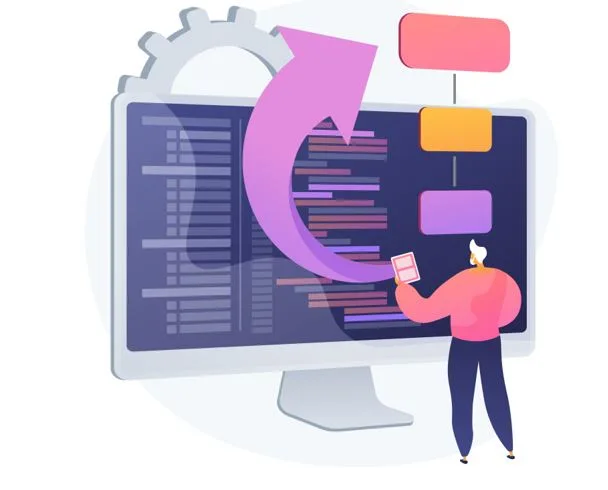How to Start Living Off the Grid
Modern life is fast, noisy, and dependent on systems that often feel beyond our control. For many people, living off the grid offers a way to reclaim independence, simplify daily routines, and live more sustainably. This lifestyle means producing your own power, sourcing your own water, and managing waste without relying on public utilities. It requires planning, preparation, and commitment, but it can also be deeply rewarding. Here’s how to start living off the grid and create a more self-sufficient life.
Understanding What Living Off the Grid Means
Living off the grid means disconnecting from municipal power, water, and sewage systems. Instead, you create your own systems for electricity, water, waste management, and food. Some people go completely off-grid, while others adopt a hybrid approach by generating part of their own energy and reducing reliance on outside sources. Living off the grid is about sustainability, freedom, and resilience. It’s not just about leaving society but learning how to thrive independently from it.
Step 1: Define Your Goals and Lifestyle
Before you start living off the grid, define what it means for you personally. Do you want complete independence from public utilities, or are you aiming for partial self-reliance? Your goals will influence your land choice, power setup, and daily habits. Consider your motivations carefully. Are you drawn to off-grid living for environmental reasons, financial savings, or a simpler way of life? Knowing your “why” helps guide every decision you make. Once your vision is clear, you can build a plan that aligns with your values and long-term goals.
Step 2: Choose the Right Location
The most important factor in living off the grid is where you decide to live. Look for a location that offers abundant natural resources, such as sunlight for solar panels, a nearby water source, and fertile land for gardening. Check local zoning laws and building codes to make sure off-grid living is allowed. Some areas have strict regulations about composting toilets or solar installations. Remote land might be cheaper, but access to roads, healthcare, and supplies can be challenging. Balance seclusion with practicality. It’s often better to start in a semi-rural area before moving deeper off the grid once you gain experience.
Step 3: Secure a Reliable Power Source
Generating your own power is a cornerstone of living off the grid. Solar energy is the most common solution because it’s renewable and accessible. A solar power system requires panels, an inverter, and batteries for storage. The size of your setup depends on how much electricity you need. Wind turbines and micro-hydropower systems are alternatives, especially in windy or water-rich regions. Many off-grid homes use a combination of power sources for reliability. Backup generators can be useful during cloudy seasons or equipment failures. Regular maintenance and efficient energy use will ensure your system stays functional year-round.
Step 4: Establish a Water Supply
Water is essential, so planning your water system should be a top priority. Wells, rainwater collection, and natural springs are the main sources for off-grid living. A drilled well can provide a dependable long-term supply, but it’s expensive up front. Rainwater harvesting is affordable and sustainable, especially with good filtration systems. Be sure to include proper storage tanks, purification methods, and pumps if needed. For safety, have your water tested periodically. Conserving water through low-flow fixtures and greywater recycling will help extend your supply and reduce strain on your system.
Step 5: Design a Waste Management System
Waste disposal is another crucial part of living off the grid. Without public sewage systems, you’ll need an independent setup. Composting toilets are a popular choice because they’re low-maintenance and environmentally friendly. Alternatively, you can install a septic system if allowed by local codes. For greywater from sinks and showers, use filtration or natural treatment systems before recycling it for irrigation. Managing solid waste requires minimizing consumption, reusing materials, and composting organic matter. Living off the grid means taking responsibility for every output your home produces.
Step 6: Build or Adapt Your Shelter
When building or remodeling a home for off-grid living, energy efficiency and durability are key. Tiny homes, cabins, and earth-sheltered houses are popular options. Choose materials that are local, sustainable, and insulating. A well-designed passive solar home can capture sunlight for natural heating and lighting. Incorporate features like high-quality insulation, double-pane windows, and wood-burning stoves to reduce your energy needs. If you’re new to construction, start small. Many off-gridders build their homes in phases, improving as they learn what works best in their environment.
Step 7: Grow and Preserve Your Own Food
Food independence is one of the most rewarding parts of living off the grid. Start by creating a garden with crops suited to your climate and soil type. Raised beds, greenhouses, and permaculture techniques can extend your growing season. Fruit trees, berry bushes, and perennial vegetables reduce the need for constant replanting. Consider raising chickens for eggs, goats for milk, or bees for honey. Learn food preservation methods like canning, drying, and fermenting to store your harvest for winter. Over time, your homestead can provide nearly all your dietary needs.
Step 8: Learn Essential Skills
Living off the grid requires practical knowledge and adaptability. Basic skills such as carpentry, plumbing, gardening, and first aid become invaluable. Learn how to maintain your solar system, repair tools, and handle emergencies. Many off-grid communities share skills through workshops or online forums. The more you can do yourself, the less dependent you’ll be on outside help. This lifestyle rewards those who are curious, patient, and willing to keep learning.
Step 9: Manage Finances Wisely
While living off the grid can save money over time, initial setup costs can be significant. Land, solar panels, batteries, and construction materials all require investment. Create a detailed budget that includes maintenance and replacement costs. Reducing your dependence on consumer goods and utilities helps balance these expenses. You can also generate income by selling handmade products, excess produce, or renewable energy. Some off-gridders work remotely or run small online businesses. Financial freedom is as important as energy independence in sustaining an off-grid lifestyle.
Step 10: Stay Connected and Safe
Living off the grid doesn’t mean cutting yourself off from the world. Maintaining communication and emergency preparedness is vital. Satellite internet and phones allow you to stay informed and connected. Keep a first-aid kit, fire extinguishers, and emergency supplies readily available. Learn basic survival techniques and keep a plan for natural disasters. Building relationships with neighbors or nearby off-grid communities can provide mutual support and knowledge sharing.
Step 11: Adapt to a New Routine
Transitioning to living off the grid requires patience and flexibility. Daily tasks like collecting water, maintaining equipment, and managing food supplies take time. You’ll become more aware of natural rhythms such as daylight hours and weather changes. Expect challenges, from power shortages to learning curves in gardening or construction. Over time, these routines become second nature, and you’ll find a deep satisfaction in meeting your own needs. The simplicity and self-sufficiency of off-grid life often lead to a stronger connection with nature and yourself.
Step 12: Reduce, Reuse, and Respect the Environment
At its core, living off the grid is about living in harmony with the environment. Use renewable materials, reduce waste, and respect the ecosystems around you. Compost food scraps, recycle whenever possible, and minimize your carbon footprint. Sustainable living doesn’t mean perfection—it’s about continuous improvement and mindful choices. When you take care of the land, it takes care of you in return.
Step 13: Join the Off-Grid Community
You don’t have to do everything alone. The off-grid community is growing, and many people are eager to share their experiences. Join online groups, attend sustainability workshops, and connect with like-minded individuals. These communities offer advice on technical challenges, lifestyle adjustments, and local regulations. Sharing stories and knowledge helps everyone thrive. You’ll find that living off the grid is not just a lifestyle—it’s a movement toward greater freedom and environmental stewardship.
Taking the First Step Toward Freedom
Living off the grid is more than just a way to escape modern life; it’s a path toward independence, sustainability, and personal growth. By generating your own power, growing your own food, and taking control of your resources, you gain freedom and resilience. It’s a lifestyle that requires effort, but the rewards are immeasurable. Whether you start small with solar panels and a backyard garden or go fully off-grid, each step brings you closer to a simpler, more meaningful life. The journey begins with one choice: to live deliberately, sustainably, and on your own terms.






